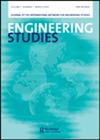社论:站在彼此的肩膀上
IF 1.3
3区 工程技术
Q2 EDUCATION, SCIENTIFIC DISCIPLINES
引用次数: 1
摘要
这篇社论的标题来自“如果我站在巨人的肩膀上看得更远”——艾萨克·牛顿用这个著名的比喻来形容他欠前辈的债这个比喻——稍作修饰——很好地适用于本期《工程研究》的三篇文章。但是这个比喻和那些文章——加上一些修补——也引起了我们对如何在本刊和更广泛的工程研究领域相互交流和相互学习的思考。所以让我从这三篇文章开始,以一些关于期刊和领域的想法结束。我们的第一篇文章,雷切尔·王尔德和大卫·吉尔的《面向客户的跨专业项目团队:工程师的角色与“情境判断”》,可能最接近最初的“巨人的肩膀”形象。作者研究了一种越来越普遍的工程工作形式:团队将不同专业的代表(通常来自几个不同的承包组织)聚集在一起,代表客户执行一个项目,然后解散。显然,这在工程领域并不是一个全新的现象;事实上,像Eda Kranakis这样的历史学家已经表明,在一个多世纪以来,这种项目团队内部良好沟通的障碍导致了工程灾难如果有的话,我认为工程师应该为“投影”从他们的专业传播到其他高科技行业(如电子商务)甚至音乐(“乐队”是如此的20世纪)而受到一些赞扬(或指责!)但是项目是新自由主义组织工作方式(更少的雇员,更多的承包商和自由职业者)的自然辅助,因此随着新自由主义经济的发展,项目将越来越普遍——因此工程研究应该越来越感兴趣项目团队的巨大优势和劣势在于它们是异构的和无常的。每当新团队成立时,成员们通常都必须建立一种新的工作关系,因此每次都必须重新学习谁知道什么。这个过程可能会导致摩擦,因为并非所有成员都有相同的优先事项;根据Luc Boltanski和Laurent thsamuvenot的“价值顺序”概念,王尔德和吉尔展示了不同工程专业的代表如何认识到并克服他们在评估价值方面的差异这可能是一个艰难的、挫伤自我的过程。但这是一个可以增加项目价值的过程;不一定对当前客户有价值,但可能对下一个客户有价值,下一个客户,很快。在yan moulier Boutang之后,作者将这种讨论称为“非物质活动”。显然,这些相互作用是有物质基础的,但穆利埃·布唐和作者的意思是,这种相互作用是没有成本的——没有人付钱让工程师们在众所周知的饮水机旁闲逛——然而,这种相互作用对项目的完成至关重要。从这个意义上说,从一个项目到下一个项目带来的经验——工程师们站在巨人的肩膀上——是“非物质的”,但对项目的成功来说却是非常重要的,甚至是不可或缺的。本文章由计算机程序翻译,如有差异,请以英文原文为准。
Editorial: Standing on Each Other’s Shoulders
The title of this editorial comes from the expression ‘if I have seen further it is by standing on the shoulders of giants’ – ametaphor famously used by Isaac Newton to describe the debts he owed to his predecessors.1 It is a metaphor that – with some tinkering – applies nicely to the three articles in this issue of Engineering Studies. But the metaphor and those articles also – with some tinkering – invite reflection on how we interact with and learn from each other at this journal and in the wider field of engineering studies. So let me begin with the three articles and finish with some thoughts on the journal and the field. Our first contribution, ‘Client-Facing Interprofessional Project Teams: The Role of Engineers’ ‘Situated Judgment’ by Rachel Wilde and David Guile, probably comes closest to the original ‘shoulders of giants’ imagery. The authors examine a formof engineeringwork that is increasingly common: teams that bring together representatives of various specializations (and often from several different contracting organizations) to carry out a project on behalf of a client and then disband. Obviously, this is not an entirely new phenomenon in engineering; indeed, historians such as Eda Kranakis have shown that the obstacles to good communication within such project teams have contributed to engineering disasters for well over a century now.2 If anything, I think engineers should take some credit (or blame!) for the spread of ‘projectification’ from their profession to other high-tech industries (such as dot-commerce) and even to music (‘bands’ are so 20th century).3 But projects are a natural auxiliary to neoliberal ways of organizing work (fewer employees, more contractors and freelancers) and thus as the neoliberal economy grows projects will be increasingly common – and thus should be of growing interest to engineering studies.4 The great strength and weakness of project teams is that they are heterogeneous and impermanent. Members often must forge a new working relationship whenever a new team is convened, and therefore have to re-learn who knows what about what every time. That process can result in frictions, because not all members have the same set of priorities; drawing on Luc Boltanski and Laurent Thévenot’s idea of ‘orders of worth,’ Wilde and Guile show how representatives of different engineering specialties come to recognize and then overcomedifferences in how they assessworth.5 That can be an arduous, ego-bruising process. But it’s a process that can add value to the project; not necessarily value for the current client, but perhaps value for thenext client, and thenext, and soon. FollowingYannMoulier Boutang, the authors refer to these kinds of discussions as ‘immaterial activity.’6 Obviously there is a material basis for these interactions, but what Moulier Boutang and the authors mean is that the interactions are not costed – no one pays for engineers to hang out at the proverbial water cooler – and yet are essential to the completion of the project. Experiences brought from one project to the next – the giants’ shoulders that engineers stand on – are in this sense ‘immaterial,’ and yet are highly material, even indispensable, to project success.
求助全文
通过发布文献求助,成功后即可免费获取论文全文。
去求助
来源期刊

Engineering Studies
ENGINEERING, MULTIDISCIPLINARY-HISTORY & PHILOSOPHY OF SCIENCE
CiteScore
3.60
自引率
17.60%
发文量
12
审稿时长
>12 weeks
期刊介绍:
Engineering Studies is an interdisciplinary, international journal devoted to the scholarly study of engineers and engineering. Its mission is threefold:
1. to advance critical analysis in historical, social, cultural, political, philosophical, rhetorical, and organizational studies of engineers and engineering;
2. to help build and serve diverse communities of researchers interested in engineering studies;
3. to link scholarly work in engineering studies with broader discussions and debates about engineering education, research, practice, policy, and representation.
The editors of Engineering Studies are interested in papers that consider the following questions:
• How does this paper enhance critical understanding of engineers or engineering?
• What are the relationships among the technical and nontechnical dimensions of engineering practices, and how do these relationships change over time and from place to place?
 求助内容:
求助内容: 应助结果提醒方式:
应助结果提醒方式:


